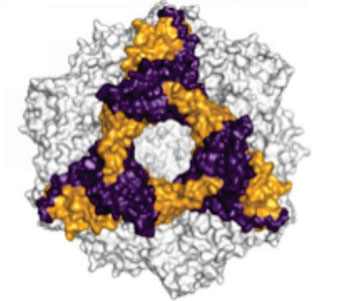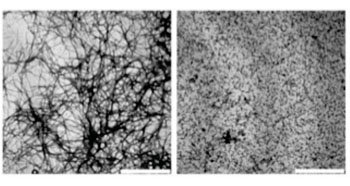Solid State NMR Reveals Heat Shock Protein's Molecular Structure
By LabMedica International staff writers
Posted on 27 Oct 2015
A team of German proteomics researchers has established the molecular structure of the small heat shock protein alpha-B-crystallin, a finding that is expected to aid in the search for drugs to treat illnesses such as Alzheimer's disease, which are characterized by toxic protein clumping.Posted on 27 Oct 2015
Heat shock proteins (HSP) are a family of proteins—of which alpha-B-crystallin is a member—that are produced by cells in response to exposure to stressful conditions. They were first described in relation to heat shock, but are now known to also be expressed during other types of stress including exposure to cold, UV light, and during wound healing or tissue remodeling. Many members of this group perform a chaperone function by stabilizing new proteins to ensure correct folding or by helping to refold proteins that were damaged by cell stress.
Mechanistic details of human alpha-B-crystallin, particularly in its client-bound state, have been difficult to obtain, owing to the high molecular weight and the heterogeneity of these complexes.
Investigators at the Technical University of Munich (Germany) and the Helmholtz Zentrum Muenchen (Munich, Germany) used state-of-the-art solid-state NMR (nuclear magnetic resonance) spectroscopy to study the structure of alpha-B-crystallin bound to Alzheimer's disease Abeta1–40 peptide and, in a separate study, to the enzyme lysozyme.
They reported in the October 12, 2015, online edition of the journal Nature Structural Molecular Biology that the alpha-B-crystallin complex was assembled from asymmetric building blocks. Interaction studies demonstrated that the fibril-forming Alzheimer's disease Abeta1–40 peptide preferentially bound to a hydrophobic edge of the central beta-sandwich of alpha-B-crystallin. In contrast, the amorphously aggregating client lysozyme was captured by the partially disordered N-terminal domain of alpha-B-crystallin. These results implied that alpha-B-crystallin used its inherent structural plasticity to expose distinct binding interfaces and thus interact with a wide range of structurally variable clients.
Senior author Dr. Bernd Reif, professor of chemistry at the Technical University of Munich, said, "Alpha-B-crystallin exists in various different forms comprising 24, 28, or 32 subunits that are permanently being swapped. In addition, it has a large molecular weight. These factors make structure analysis very difficult."
Related Links:
Technical University of Munich
Helmholtz Zentrum Muenchen















